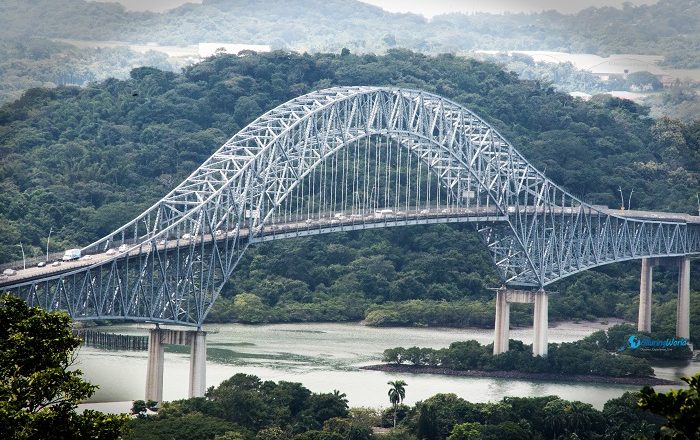The Bridge of the Americas, locally referred to as Puente de las Américas, is a big and quite majestic bridge that spans over the Pacific entrance of the Panama Canal, and it is located in the District of Balboa, which is part of the capital city of Panama, within the central part of the Republic of Panama. Being an amazing engineering marvel and one of Panama’s most iconic landmarks, this bridge serves as a crucial transportation link that connects two continents and allows for local and international traffic to take place, making it an important link in the country. The strategic location next to the capital highlights its importance in the region, making it vital for commerce, travel, and tourism in Panama.

The idea for the Bridge of the Americas emerged in the mid-20th century as Panama faced increasing transportation challenges due to the rapid growth of Panama City and the surrounding areas. As it happened in the past, to cross the Panama Canal, people would rely mostly on ferry services, which were slow, and most of the time, they were subject to interruptions depending on canal operations. The need for a permanent, reliable, and modern roadway became essential to support economic growth, urban development, and the efficient movement of goods and people. Recognizing this necessity, the Panamanian government, in collaboration with international engineering firms, commissioned the construction of a bridge that could accommodate both vehicular traffic and the demands of a critical international shipping route.
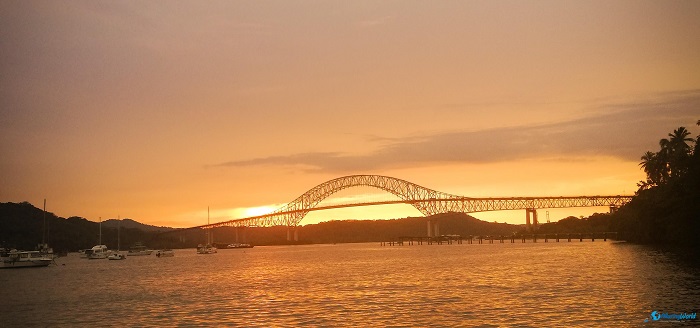
Construction of the Bridge of the Americas began in 1959 and was completed in 1962. The structure is designed as a cantilever one, more precisely as a steel through arch bridge or a tied arch that is supported by cantilever trusses, which allowed for a long central span to be placed over the canal without the need for support piers in the waterway, ensuring that large ships could pass beneath unimpeded. Its total length stretches approximately 1,655 m (5,429 ft), with the central span measuring 344 m (1,129 ft) across the canal. As can be seen from the entire structure, reinforced concrete and steel have been used to construct this marvel because these materials provide the strength and the needed durability to withstand heavy traffic loads while “surviving” the environmental conditions of the tropical climate, including high humidity, salty air, and occasional seismic activity.
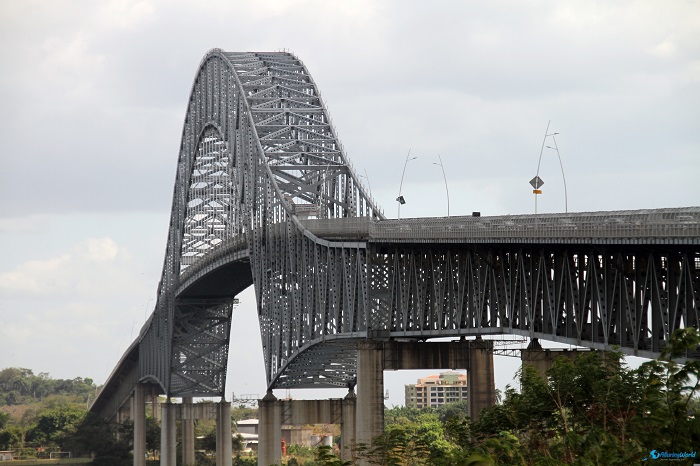
As seen from an architectural perspective, the Bridge of the Americas reflects functional modernist principles, with clean lines, a focus on structural integrity, and very minimal ornamental design. The cantilevered truss system serves an engineering purpose; it also gives the bridge that distinctive profile that has become instantly recognizable in photographs and aerial views of the Panama Canal. The elevated roadway allows for ships to pass freely beneath it, with a vertical clearance of 61.3 m (201 ft), ensuring uninterrupted canal operations. The combination of engineering sophistication and aesthetic simplicity made the bridge be seen as a symbol of Panama’s development and international connectivity.
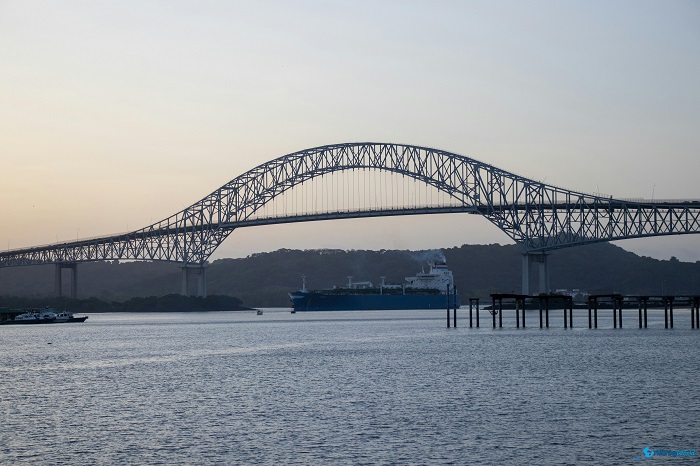
Historically, the Bridge of the Americas holds profound significance. When it was completed, it was the first permanent road link that connected the eastern and western parts of the country, effectively uniting Panama geographically and socially. Despite the functional role the bridge has of connecting land masses, it has also become a national icon, symbolizing progress, modernization, and the importance of Panama as a hub for global trade. Nevertheless, during the time of its construction, it was considered a remarkable achievement in civil engineering as something similar was not being constructed back then, drawing attention from international media and engineers worldwide. When it was completed in 1962, it changed the history of Panama, as it enhanced the nation’s ability to facilitate commerce and travel over land while also strengthening its geopolitical significance.
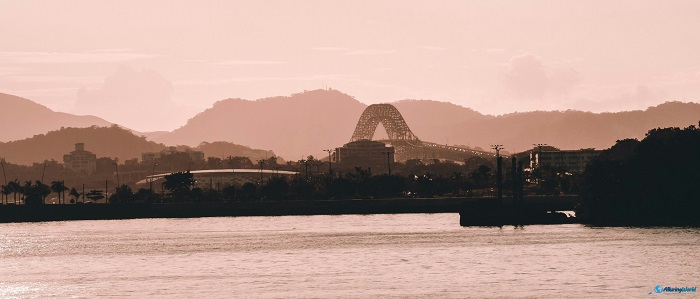
Over the decades, the Bridge of the Americas has accommodated increasing volumes of traffic as Panama City expanded and the surrounding regions developed. At first, the bridge was designed for moderate traffic, but the bridge now serves tens of thousands of vehicles daily, including private cars, buses, and commercial trucks transporting goods between the Pacific and Atlantic sides of the country via connecting roadways. Recognizing the need to manage growing congestion, authorities have implemented traffic management strategies, ongoing maintenance programs, and infrastructure improvements to make sure that the bridge will remain safe, efficient, and durable.
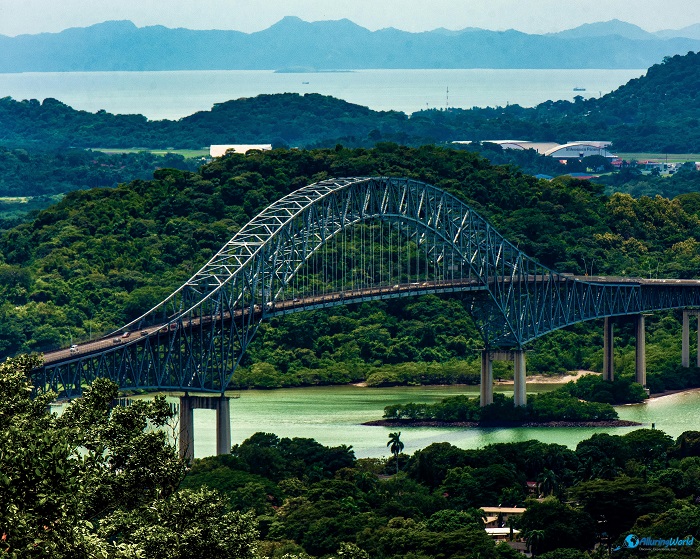
Visiting the Bridge of the Americas offers a unique experience for both tourists and locals. While the bridge itself is primarily a transportation route, the strategic vantage point it holds simply allows visitors to enjoy panoramic views of the grandiose Panama Canal, the city skyline, and the Pacific entrance. There are several observation points and nearby areas that provide excellent opportunities for photography and sightseeing. It is here that travelers can witness how large cargo ships navigate the canal beneath the bridge, while offering a tangible sense of the scale and significance of Panama’s maritime operations. To top it all, the bridge’s location further allows easy access to nearby attractions, including the historic districts of Panama City, the Amador Causeway, and the Pacific entrance to the Panama Canal.
The best time to experience the Bridge of the Americas is during the dry season, from December to April, when the weather is sunny and conditions are ideal for photography and sightseeing. During this period, the skies are clear, offering unobstructed views of the bridge, the canal, and the surrounding landscapes. Visitors are advised to use caution when driving or walking near the bridge, as traffic can be heavy, and to take advantage of designated observation areas for a safe and enjoyable experience. Guided tours and boat trips on the canal often include views of the bridge from below, providing a comprehensive perspective of its engineering scale and design.
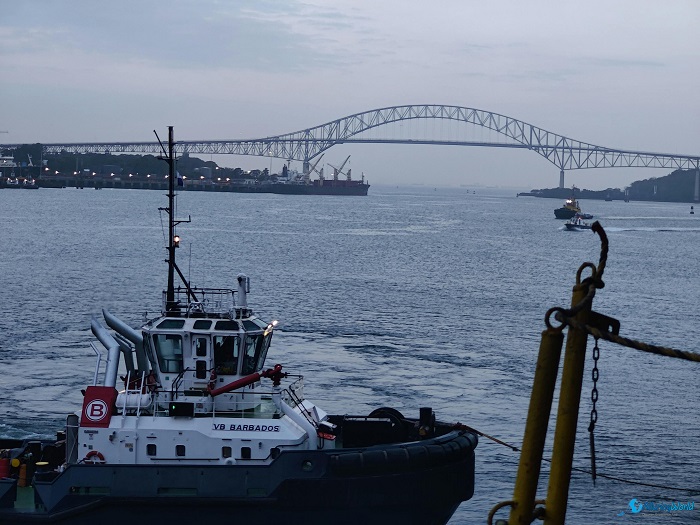
Perhaps, the biggest role the Bridge of the Americas has is in Panama’s economic infrastructure. Connecting the east and west of the country facilitates the efficient movement of goods, services, and people, and this is critical for Panama’s role to continue to be seen as an international trade hub. Enhancing the connectivity between the Pacific ports, industrial areas, and urban centers, the bridge supports commercial activities and contributes to the nation’s overall economic development. The continued and never-ending maintenance and modernization ensure that it will remain a vital component of Panama’s transport network for decades to come.
In addition to its practical and economic significance, the Bridge of the Americas is a source of cultural pride and national identity because it showcases that the Panamanians can build large-scale engineering projects, and they can link the country physically and metaphorically with the world. There are many photographs, postcards, and media coverage that frequently feature the bridge as a representation of Panama’s ingenuity, resilience, and strategic importance in global maritime trade.

In conclusion, the Bridge of the Americas is far more than a roadway; it is a symbol of Panama’s connectivity, economic importance, and engineering achievement. Completed in 1962, constructed with reinforced concrete and steel, and designed as a cantilevered structure, the bridge ensures the uninterrupted passage of ships while linking the eastern and western parts of the country. Its architectural simplicity, functional design, and historical significance make it an essential landmark in Panama, providing both practical transport benefits and cultural value. Accessible from Panama City, with the best visiting conditions during the dry season, the Bridge of the Americas invites travelers, engineers, and history enthusiasts to explore its significance, admire its scale, and appreciate its role in shaping Panama’s past, present, and future.


